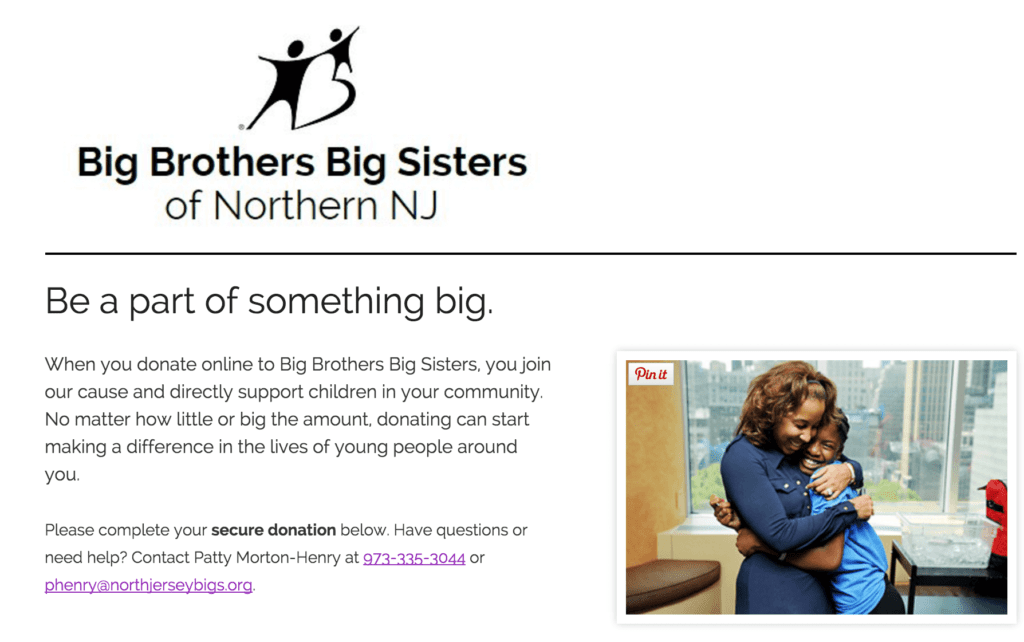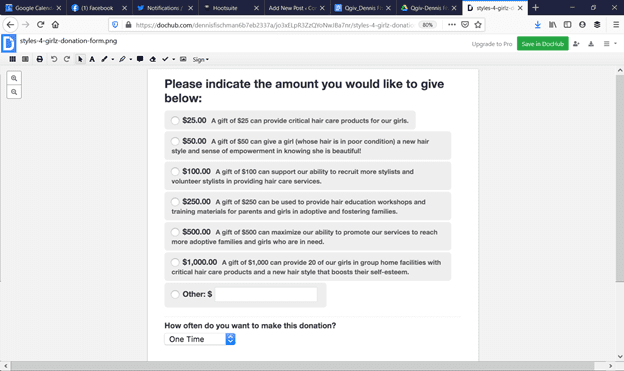A guest post by Steve Lausch of OneCause
Looking for new ways to inspire donors to support your cause? We’ve got you covered!
Your organization’s audience consists of diverse individuals with different preferences and characteristics, so the key to capturing everyone’s interests is to host a variety of fundraising campaigns.
As you plan your annual fundraising strategy, remember to include opportunities for those outside your local community. You want to ensure that remote supporters feel seen and appreciated just as much as if they were located near you.
There are many ways to involve remote supporters. Let’s look at three top online fundraising ideas you can incorporate to leverage the generosity of supporters near and far.
1. Online Donation Page
Engage your remote supporters by accepting online donations. This is the first step to successful fundraising! An online donation page allows you to receive a reliable stream of revenue from your nonprofit’s website.
Keep in mind the following tips when setting up your donation page:
- Design: Build awareness by having your organization’s colors and logos throughout your site.
- Donation options: Retain donors by providing the option of one-time or recurring donations to support your cause.
- Payment options: Enhance the giving experience by accepting Apple Pay, Google Pay, PayPal, Venmo, and other forms of digital wallet.
- Accessibility: Consider adding text under images for any remote supporters using screen readers, and otherwise follow the Web Content Accessibility Guidelines.
- Impact statements: Emphasize the power of donations with images, videos, examples, or a brief explanation of how they help your cause.
The best software will allow you to effortlessly personalize and create impactful donation pages to maximize your giving. Once you’ve created your donation page, make sure to embed it in your nonprofit’s website for supporters to find easily. If you don’t have a website, consider working with a web design company to start the process.
2. Online Auction
Auctions are a popular fundraising event for nonprofits, so why not take yours beyond the ballroom? Enable bidding from your remote supporters with an online auction! Hosting such an event provides various benefits for nonprofits, including:
- Cost savings: Invest in flexible software so there’s no need to book a venue, catering services, or entertainment.
- Increased participation: Have a link to your auction to make it simple for supporters to share your cause with their social network.
- Improved accessibility: Move to an online auction to allow anyone to participate from anywhere without traveling for your event.
- Better use of resources: You won’t have to worry about costs associated with in-person events, such as renting a venue, booking a caterer, or purchasing decorations.
Usually, online auctions take one of two forms:
- Live auction: An auctioneer facilitates bidding on your auction items through a live stream. This event can be held either entirely virtually or in a hybrid format, where you invite major donors to the in-person auction and provide other supporters with the live stream link.
- Silent auction: Supporters place bids on auction items they want through an online auction site without an auctioneer present. This type of auction relies on well-written descriptions that clearly communicate what the item is to entice the viewer to make a bid.
Regardless of which type of online auction you host, bidding usually takes place through mobile devices. Be sure to purchase auction software that streamlines online bidding and makes the process smooth and convenient for remote supporters.
3. Online Peer-to-Peer Campaign
Tap into the power of peer-to-peer fundraising with your loyal supporters. You can recruit your most committed champions to fundraise on your behalf. These individuals will create their peer-to-peer fundraising site and then use their social networks to spread the word.
There are many types of peer-to-peer campaigns, including:
- Runs, walks, rides: Engage participants with physical activity, friendly competition, and social giving.
- DIY supporter-driven: Empower supporters to create their own unique campaigns on behalf of your cause.
- Giving and Awareness Days: Capitalize on dedicated giving and awareness days to boost the visibility of your campaigns and secure more donations.
- Tributes and memorials: Offer supporters the opportunity to honor loved ones with personalized fundraising pages.
Peer-to-peer fundraising is an easy way to strengthen your existing relationship with remote supporters while expanding the possibilities of new supporters not local to your organization. Once you’ve recruited supporters to act as your peer-to-peer fundraisers, prepare them for their role with training sessions, templates for marketing materials, and more. Then, stay in contact with them throughout the process to provide them with any support they need.
 Steve Lausch
Steve Lausch
Steve Lausch brings over 20 years of marketing experience to his role as the Director of Product Marketing at OneCause. He leverages his expertise in product evangelism, marketing communication, and strategic product planning to deliver innovative solutions that empower nonprofits. A storyteller at heart, Steve is energized by the opportunity to tell compelling stories that move people to action. He is dedicated to supporting nonprofits in their journey to make a positive impact on the world.



